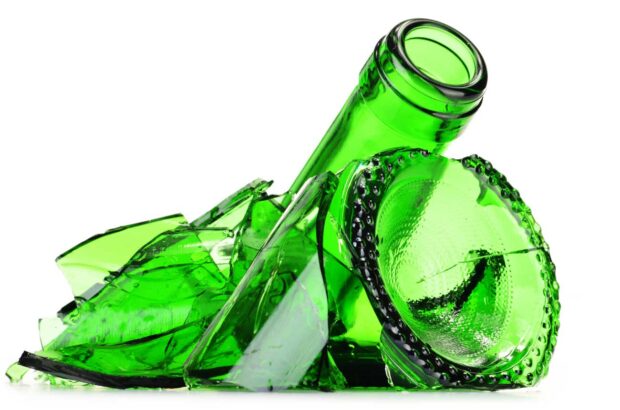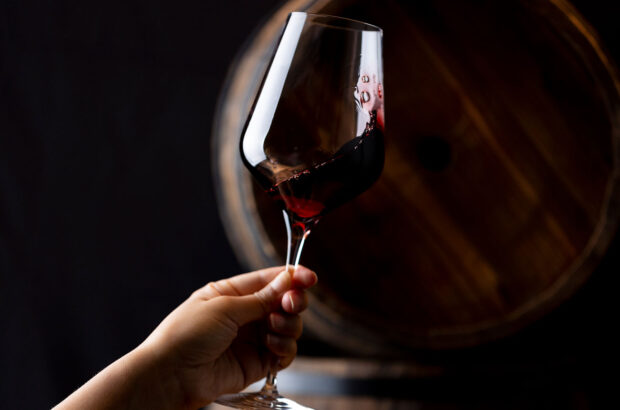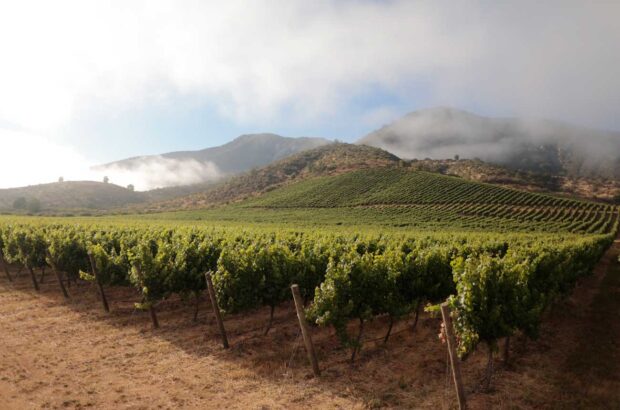This spectacular Inner Mongolian estate has already carved a sizeable market for itself within China. Now it has ambitions to put Wuhai on the international wine map, writes Anthony Rose...
After a three-hour, early morning drive from Ningxia, we cross the provincial border with Inner Mongolia, passing through grim satanic coalfields on the road to Wuhai. Our car pulls up to Chateau Hansen to reveal a unique welcoming committee.
A string band strikes up. Cameras flash. Local beauties in traditional costume garland us with a Mongolian blue sash of honour. Trucks laden with black grapes wait patiently. We are greeted by Han Jiang Ping, the smiling owner. We shake hands with Bruno Paumard, Mr Han’s French export director, and other VIPs.
Fireworks explode over desert sands into a clear blue sky. In a gesture that’s both practical and symbolic, Mr Han empties a crate of pristine grapes on to a conveyor belt that has sprung to life. My travelling companions and I are handed a cup of a dubious-looking liquid. It seems only polite to ‘ganbei’ – knock it back. To all appearances a white wine, it is in fact kumis, a traditional alcoholic drink fermented from mare’s milk as drunk by Genghis Khan, who was born in the region.
Wuhai pioneer
On the outskirts of the border city of Wuhai, Chateau Hansen sits on the western edge of the Gobi Desert close to the Yellow River. It doesn’t make kumis; it makes wine. In fact it makes two million bottles, substantially more than you might expect from this lonely outpost of northern China where the next stop north takes you into Mongolia.
Thanks to regular tours of the six big provincial cities, the wines are sold through government, business and retail networks to a local market of 40 million people. Paumard, a former sommelier and wine salesman with a penchant for showmanship, has also been busy developing markets in China’s eastern cities and beyond its borders.
The European-style estate is grand, bordering on the grandiose, encouraging visitors to stay in its 60-bedroom luxury hotel, to dine on local cuisine, to go horse or camel riding in the sand dunes and to visit the local rock art. The winery’s tourist centre receives 20,000 visitors a year.
This ambition isn’t confined to the winery itself. The ebullient Paumard came to China in 2005 in the hope of finding a Chinese wife after falling for Zhang Ziyi in Ang Lee’s Crouching Tiger, Hidden Dragon. He did. He also devised a publicity stunt last year in which Chateau Hansen’s 2010 Red Camel Cabernet Sauvignon was launched at €500 a bottle.
Wuhai has only existed in its current form since the 1950s. Built on immigrant labour introduced for coal mining, the first vines were planted by workers who grew grapes in their own back yards. Thanks to the region’s sandy soils and plentiful water supply, they were by all accounts rather tasty. By the start of the 1990s, the provincial government decided to encourage private investment for winemaking to encourage a change of drinking habits from baijiu, Chinese hard liquor, to wine.

With government support, Mr Han’s brother established a winery, but he died unexpectedly at the age of 50. Mr Han, who had retired from local government to go into real estate, took over, making his first vintage in 2001. ‘Initially I wasn’t interested because it was a long-term investment compared with real estate,’ he says. ‘But I felt obliged to continue my brother’s pioneering work and, as time wore on, I became interested in the project.’
Why? ‘Wine is a healthy product with ecological benefits, and there is much culture involved in wine compared with spirits.’ Today, Chateau Hansen is one of four local wineries.
Conditions for growing wine grapes here are unique. At 40° north and 1,500 metres above sea level, Wuhai’s advantages lie in its dry climate, abundant sunshine and sandy soils – though the winters are bitterly cold, requiring vines to be buried for protection each year. The lifeblood of the vineyards is the plentiful supply of water from the Yellow River, which flows eastwards from the Tibetan Plateau to Shandong.
With few pests or diseases and little pollution, Chateau Hansen obtained China’s AA organic certification in 2007. It produces 70 different wines from 370 hectares, of which it owns 200ha in three locations: locally; in Ningxia; and in a windy spot 60km away where a vast, subterranean water resource was found and is now fed via specially built channels leading from the Yellow River.
The rest of its grape supply comes from local growers under Hansen’s control, as well as in the two neighbouring provinces of Ningxia to the south and Gansu to the west. Yields are relatively low (too low, according to Paumard) and it’s perhaps this factor as much as any that helps produce reds – and more recently whites from Chardonnay, Semillon and Riesling – of surprising interest and concentration.
While indigenous grapes were initially planted, due to their capacity to survive harsh winter conditions, latterly the winery has planted Cabernet Sauvignon and Merlot in tandem with the local Cabernet Gernischt. Shown by DNA profiling to be Carmenere, the latter is vigorous, not very fertile, well-suited to sandy soils and displays the variety’s telltale herbal, capsicum character.
There are still substantial viticultural challenges here, among them training local growers to respect quality, vine health, identifying the best vines for the area and finding a way of dealing with the severe winters that threaten to kill off the vine.
From strength to strength
From barrels in Hansen’s extensive cellars, we taste a well-crafted Chardonnay, a Margaret River-like Hong Se Pu Cabernet, an opulently spicy Wuhai Cabernet, and a rich, cassis-like Ningxia Cabernet Sauvignon. Tasting from the bottle later, the peppery Carmenere character is evident in the Wuhai Valley Cabernet Gernischt, an approachable, unoaked red, and one of Hansen’s best value wines.
The Red Camel Cabernet Sauvignon from Ningxia is powerful with sweet prune and plum fruit, even chocolate, deliberately made in an Amarone style with a portion of late-harvest grapes. Worth €500? Take a nought off the end. Quirkier still, Hansen’s Rimage de Cabernet Gernischt, Vallée de Wuhai 2010, is a fortified red made in the style of Roussillon’s Mas Amiel and boasts aromas of Lapsang Souchong, liquorice and blueberry.
Before we leave, Mr Han tells us the provincial government recently announced a support package of £100m over the next 10 years for the establishment of 7,000ha of organic vineyards. Thanks to its tourism business and captive local market, in which the wines command an average bottle price of £10, Chateau Hansen is a remarkably successful enterprise already. With the help of this new financial boost, Mr Han has nothing less than international acclaim in his sights.
Written by Anthony Rose







